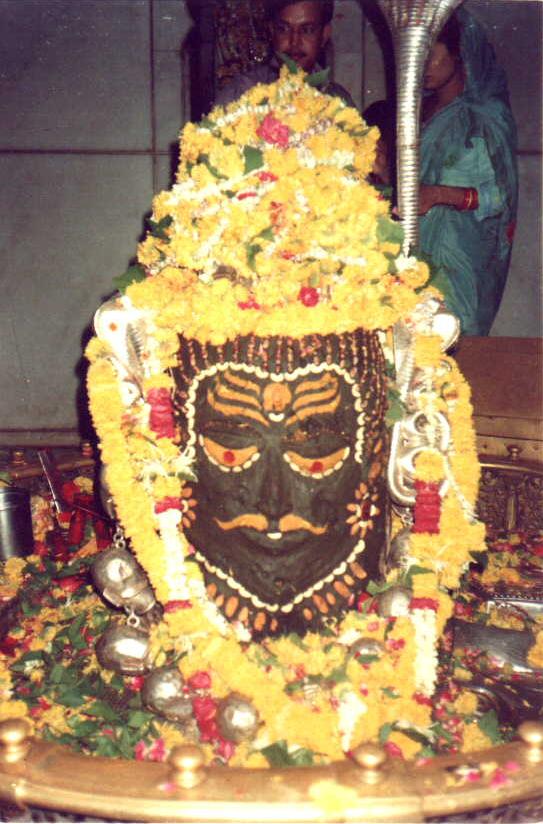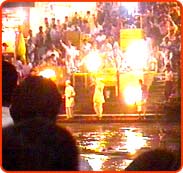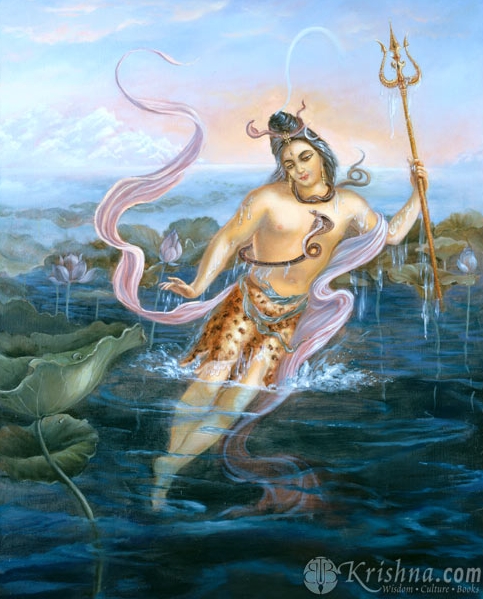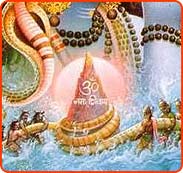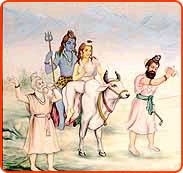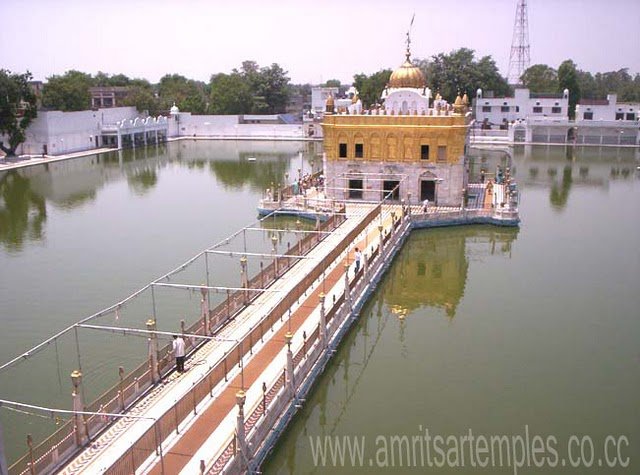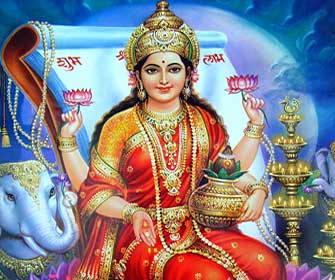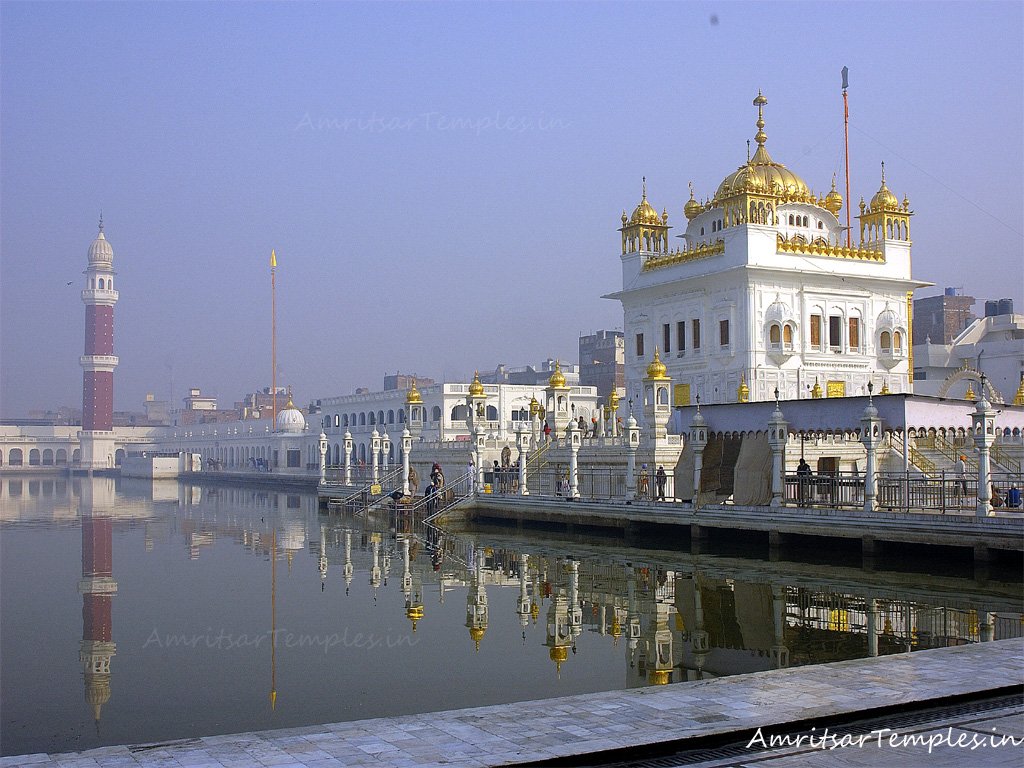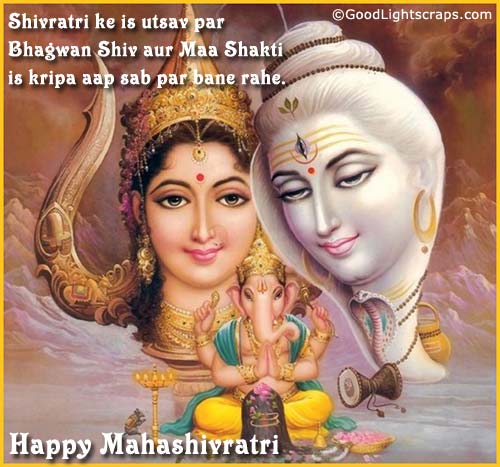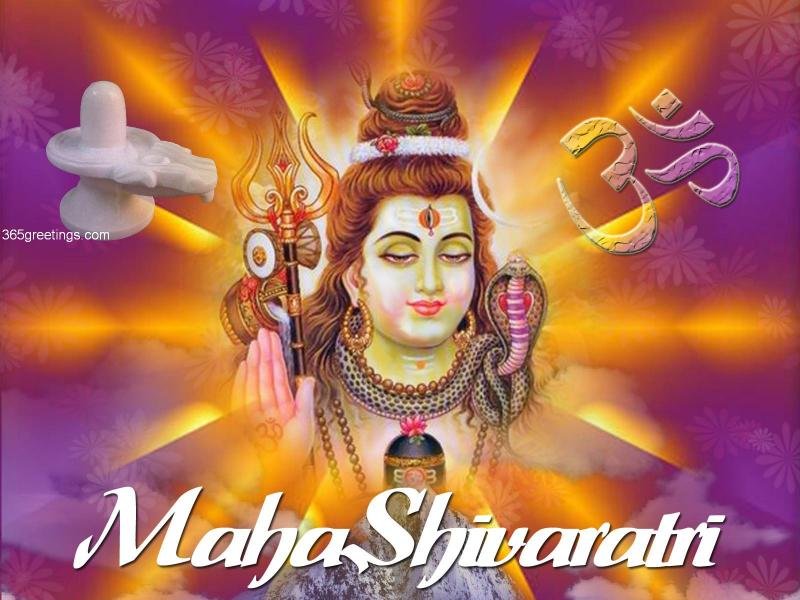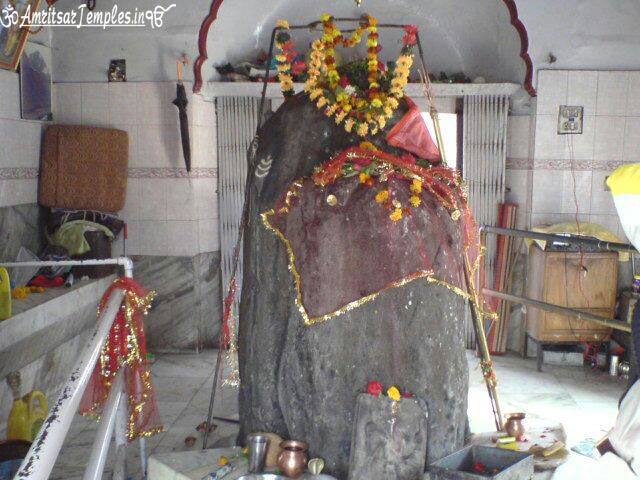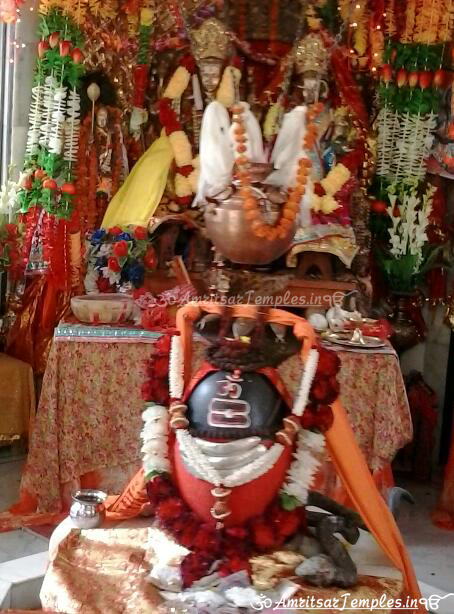Mahashivaratri Festival or the ‘The Night of Shiva’ is celebrated with devotion and religious fervor in honor of Lord Shiva, one of the deities of Hindu Trinity. Shivaratri falls on the moonless 14th night of the new moon in the Hindu month of Phalgun, which corresponds to the month of February – March in English Calendar. Celebrating the festival of Shivaratri devotees observe day and night fast and perform ritual worship of Shiva Lingam to appease Lord Shiva.
Legends of Mahashivratri
1. Marriage of Shiva and Shakti
2. Legend of Shiva Linga
 The legend of Shiva Linga or Lingodbhavamurthy is deeply related to Mahashivaratri. The legend narrates the story of vain search by Brahma and Vishnu to discover the Aadi (beginning) and the Antha (end) of Lord Shiva. The legend thus proves the supremacy of Lord Mahadeva over other Hindu Gods and explains why the lingam is believed to be one of the most potent emblems in Hindu ideals. The story is stated in the three of the puranas – the Kurma Purana, the Vayu Purana and Shiva Purana
The legend of Shiva Linga or Lingodbhavamurthy is deeply related to Mahashivaratri. The legend narrates the story of vain search by Brahma and Vishnu to discover the Aadi (beginning) and the Antha (end) of Lord Shiva. The legend thus proves the supremacy of Lord Mahadeva over other Hindu Gods and explains why the lingam is believed to be one of the most potent emblems in Hindu ideals. The story is stated in the three of the puranas – the Kurma Purana, the Vayu Purana and Shiva Purana
The Legend
According to Puranas, once the other two of the triads of Hindu Gods, Brahma and Vishnu were fighting over each other’s prowess. Horrified at the intensity of the battle, the other gods asked Shiva to intervene. To make them realize the futility of their fight, Lord Shiva assumed the form of a flaming Linga in between Brahma and Vishnu and challenged both of them by asking them to measure the gigantic Linga (phallic symbol of Lord Shiva).
Awestruck by its magnitude, Brahma and Vishnu decided to find one end each to establish supremacy over the other. Lord Brahma took the form of a swan and went upwards while Lord Vishnu assumed the form of Varaha – a boar and went into the earth towards nether land. Both searched for thousands of miles but neither could find the end.
On his journey upward, Brahma came across Ketaki flower. Exhausted and bewildered with his search to find the uppermost limit of fiery column, Brahma made Ketaki assent to lie that he had seen the top of the column where the flower had previously resided. Accompanied by his accomplice, Brahma confronted Vishnu and asserted that he had indeed discovered the origin of the cosmic column.
At this point, the central part of the pillar split open and Shiva revealed himself in his full glory. Overawed, both Brahma and Vishnu bowed before him accepted lord Shiva’s supremacy. Lord Shiva also explained to Brahma and Vishnu that both of them were born out of him and that the three were then separated out into three different aspects of divinity.
However, Lord Shiva was angry with Brahma for making a false claim. The Lord cursed Brahma that no one would ever pray to him. (This legend explains why there is hardly any Brahma temple of significance in India.) Lord Shiva also punished the Ketaki flower for testifying falsely and banned her from being used as an offering for any worship.
Since it was on the 14th day in the dark fortnight of the month of Phalguna that Shiva first manifested himself in the form of a Linga, the day is extremely auspicious and is celebrated as Mahashivaratri – the grand night of Shiva. To celebrate the occasion, devotees of Lord Shiva fast during the day and pray to the Lord throughout the night. It is said that worshipping of Lord Shiva on Shivaratri bestows one with happiness and prosperity.
 Amritsar Temples Photo Gallery, Famous Temple and Gurdwara Pictures, Information and History Amritsar Temples is the best place where you find beautiful collections of Amritsar Temple pictures, Info and history like golden temple, durgiana mandir, model town, mata lal devi mandir, shivala bagh bhayian and more. Amritsar Famous Temples, History, Information, About Historical Mandir, Golden Temple Pictures, Harmandir Sahib Gurdwara, Swarn Mandir, Darbar Sahib Amritsar, Durgiana Mandir Amritsar, Bada Hanuman Mandir Amritsar, Holy City Amritsar Pictures, Famous Amritsar Places, Shivala Bagh Bhayian Mandir,Bhadra Kali Mata Mandir, Chintpurni Mata Mandir, Ram Talai Mandir, Ram Tirath, Model Town, Mata Lal Devi Mandir, Shaheeda Sahib Gurdwara, Vaishno Devi Mata Bhawan Pictures, Radha Sawami Baba Ji Pictures, Veer Bhan Shivala, Gurdwara Chheharta Sahib, Sankat Mochan Hanuman Mandir, Gurdwara San Sahib, Banke Bihari Mandir, Gurdwara Goindwal Sahib, Baba Budha Sahib, Bohli Sahib, Itihasik Temples Pictures Download, Baba Bhoot Nath Maha Kaleshwar Mandir
Amritsar Temples Photo Gallery, Famous Temple and Gurdwara Pictures, Information and History Amritsar Temples is the best place where you find beautiful collections of Amritsar Temple pictures, Info and history like golden temple, durgiana mandir, model town, mata lal devi mandir, shivala bagh bhayian and more. Amritsar Famous Temples, History, Information, About Historical Mandir, Golden Temple Pictures, Harmandir Sahib Gurdwara, Swarn Mandir, Darbar Sahib Amritsar, Durgiana Mandir Amritsar, Bada Hanuman Mandir Amritsar, Holy City Amritsar Pictures, Famous Amritsar Places, Shivala Bagh Bhayian Mandir,Bhadra Kali Mata Mandir, Chintpurni Mata Mandir, Ram Talai Mandir, Ram Tirath, Model Town, Mata Lal Devi Mandir, Shaheeda Sahib Gurdwara, Vaishno Devi Mata Bhawan Pictures, Radha Sawami Baba Ji Pictures, Veer Bhan Shivala, Gurdwara Chheharta Sahib, Sankat Mochan Hanuman Mandir, Gurdwara San Sahib, Banke Bihari Mandir, Gurdwara Goindwal Sahib, Baba Budha Sahib, Bohli Sahib, Itihasik Temples Pictures Download, Baba Bhoot Nath Maha Kaleshwar Mandir
